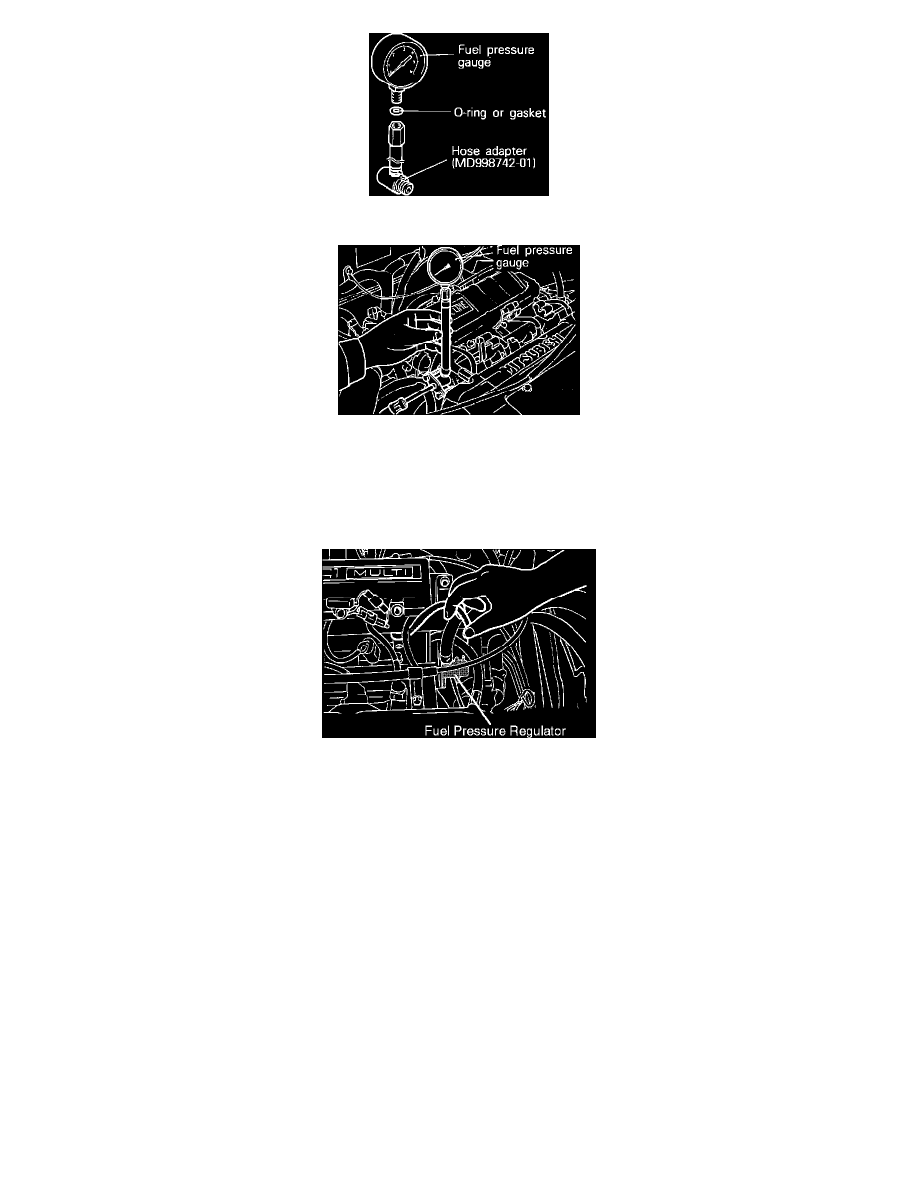Summit L4-1468cc 1.5L SOHC (1989)

Fuel Pressure Testing Equipment And Adapter
Fuel Pump Pressure Test Equipment Installed
3.
Using the fuel pressure gauge adapter (MD998742-01) or equivalent, install the fuel-pressure gauge to the delivery pipe (fuel rail).
4.
Connect the battery negative terminal.
5.
Apply battery power to the fuel pump drive terminal to activate the fuel pump. With fuel pressure applied check that no fuel is leaking at any of the
connections.
Fuel Pressure Regulator W/Vacuum Line Disconnected
6.
Disconnect the vacuum hose from the pressure regulator, and plug the hose end. Measure the fuel pressure at idle.
Standard Value:
47-50 psi (330-350 kPa)
7.
Measure the fuel pressure when the vacuum hose is connected to the pressure regulator.
Standard Value:
38 psi (270 kPa).
NOTE: At the completion of steps 5 thru 7, prior to turning the ignition off, disconnect the battery power to the fuel pump drive terminal. If the
engine stops and no fuel pressure is observed, there is a problem in the power supply to the fuel pump.
8.
If the results of the measurements made in steps 6 and 7 are not within the standard values, refer to the symptoms listed below to determine the
probable cause and make the necessary repairs before re-testing.
a.
Fuel pressure too low:
1.
Clogged fuel filter---Replace
2.
Fuel bleeds down to return hose---Replace the fuel pressure regulator
3.
Low pump output pressure---Check for leak in-line or replace fuel pump
b.
Fuel pressure too high:
1.
Regulator stuck closed---Replace the fuel pressure regulator
2.
Clogged or bent fuel return hose---repair hose
c.
No difference with or without vacuum connected:
1.
Non-responsive regulator---Replace the fuel pressure regulator
